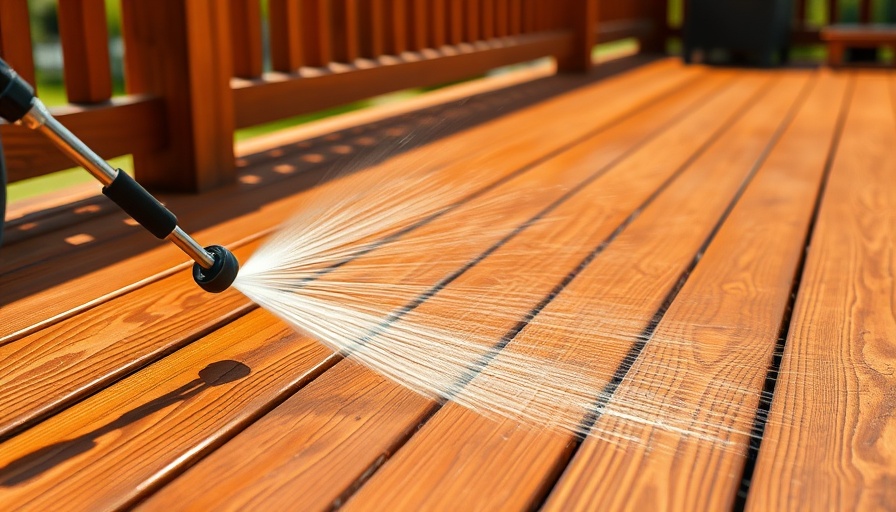
Why End-of-Summer Cleaning is Essential
As summer winds down, many of us switch gears from beach days and barbecues to back-to-school routines and autumn preparations. But before you say goodbye to the long days of summer, make sure to tackle some important cleaning tasks that can transform your living space into a fresh, organized haven. Not only does it prepare your home for the coming months, but it also creates a welcoming environment for family and friends as you head into the holiday season.
Simple Summer Cleaning Tasks for a Big Impact
Cleaning your home doesn’t need to be a chore; it's a chance to discover and appreciate what you have. Here are ten end-of-summer cleaning tasks that can significantly refresh your space without the need for professional help.
1. Clear Out Summer Gear
Summer can leave behind a trail of items like beach towels, sunscreen, and patio furniture that are only needed for a few more weeks. Take stock of what you truly need and eliminate the clutter. Donate items in good condition to local charities or set up for a garage sale.
2. Clean Your Storage Areas
Your shed and garage likely endured a heavy workload during the summer. Give these spaces a thorough clean. Make it a process: empty out what’s inside, wipe surfaces down, and reorganize with a focus on what will be essential as the seasons change.
3. Revive Your Outdoor Furniture
Has your outdoor furniture seen better days? Dust off your tables and chairs and check for fading or weather damage. A little bit of TLC, such as a fresh coat of paint or new cushions, can significantly enhance your outdoor space for entertaining.
4. Dust Off High-Traffic Areas
Dust accumulates in high-traffic areas like mantels, shelves, and baseboards. A once-over with a microfiber cloth and a safe cleaning spray can help you reclaim every corner of your home. This will also improve air quality, particularly if you or someone in your household suffers from allergies.
5. Deep Clean Kitchen Appliances
Your refrigerator and ovens worked overtime during summer gatherings. Now’s the time to deep clean them. Pay close attention to your oven’s self-clean feature and pull everything out of your fridge for a thorough wipe down. A clean kitchen makes preparing fall meals more enjoyable!
6. Check Your HVAC Systems
Summer can put your HVAC system to the test, working hard to keep your home cool. This is a perfect time to clean or change your filters and ensure your system runs efficiently. Consider professional maintenance for your heaters before they kick in for the colder months.
7. Wash Windows and Screens
Summer can wreak havoc on your windows. Dust and moisture may have built up. Take the time to wash both windows and screens for a clearer view of the beautiful fall foliage.
8. Organize Indoor Spaces
With school starting, it's an excellent opportunity to reorganize your living areas. Declutter kid’s backpacks and check supplies. Implement some fun storage solutions that engage children in keeping their spaces tidy.
9. Clean Out the Pantry
A thorough pantry clean is not just beneficial for aesthetics—it can also help you monitor dates on food products. Toss anything expired and make room for comforting autumn ingredients to fuel those chilly evenings!
10. Ready the Home for Fall
Lastly, prepare your home for the upcoming seasons by candle-lighting, adding warm throws, and strategically placing safe fall decorations. Creating an inviting interior will inspire you to enjoy the harvest time.
Be Prepared: Safety First
While getting things in order, don’t forget the key aspect of safety and security during your cleaning endeavors. Ensure that all chemicals are stored securely, especially if you have pets or children. Additionally, keep track of outdoor tools that could be hazardous if not stored properly.
Conclusion: Clean Spaces Lead to Clear Minds
Cleaning before the end of summer isn’t just about keeping a tidy home; it’s about reclaiming space, preparing for change, and setting the tone for the busy months ahead. Dive into these tasks with a sense of accomplishment and creativity! So roll up those sleeves, put on some music or a podcast, and embrace the transformation within your home. Your future self will thank you!
 Add Row
Add Row  Add
Add 



Write A Comment